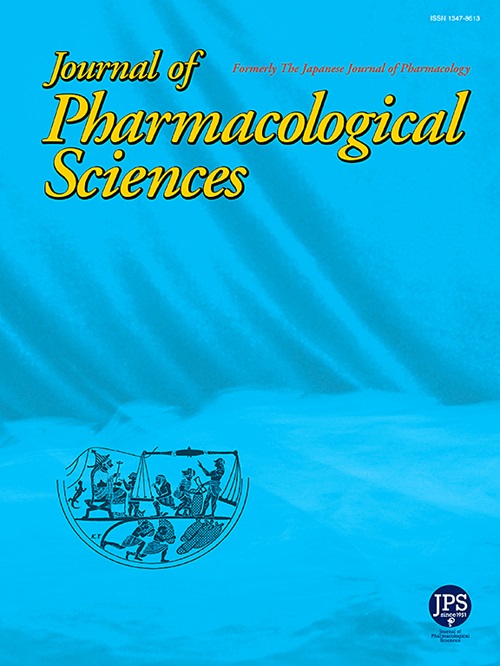Phenylalanine amide derivatives promote FLG expression via AHR activation in normal human epidermal keratinocytes
IF 2.9
3区 医学
Q2 PHARMACOLOGY & PHARMACY
引用次数: 0
Abstract
Filaggrin (FLG) is one of the major components expressed in terminally differentiated keratinocytes and critical for skin barrier functions. It is known that reduced FLG expression causes skin barrier dysfunctions and results in atopic dermatitis (AD). Restoring FLG expression therefore may serve as an effective therapeutic strategy against AD. Using normal human epidermal keratinocyte (NHEK), we identified a phenylalanine amide derivative, termed Compound 8.1, that promotes expression of FLG and other skin barrier-related genes in NHEKs. Gene expression profiling by microarray suggested that Compound 8.1 promotes FLG expression through activation of the aryl hydrocarbon receptor (AHR). Interestingly, compared to a typical AHR activator, FICZ (6-Formylindolo[3,2-b]carbazole), Compound 8.1 preferentially upregulated the expression of genes related to keratinocyte differentiation and skin barrier function in an AHR-dependent manner, but induced a conventional AHR target gene involved in cellular toxicity, CYP1A1, to a significantly lesser extent. Structure-activity relationship analysis further demonstrates that the structural modification of Compound 8.1 could dissociate induction of skin barrier-related gene expression from CYP1A1-dependent metabolism of xenobiotics in AHR actions. Together, our results suggest that Compound 8.1 serves as a prototype compound for developing novel AHR-activating drugs to treat skin barrier dysfunctions without toxicity.
苯丙酰胺衍生物通过AHR激活在正常人表皮角质形成细胞中促进FLG表达
聚丝蛋白(Filaggrin, FLG)是终分化角质形成细胞中表达的主要成分之一,对皮肤屏障功能至关重要。众所周知,FLG表达减少会导致皮肤屏障功能障碍并导致特应性皮炎(AD)。因此,恢复FLG表达可能是对抗AD的有效治疗策略。使用正常的人表皮角质细胞(NHEK),我们发现了一种苯丙氨酸酰胺衍生物,称为化合物8.1,可促进FLG和其他皮肤屏障相关基因在NHEK中的表达。基因表达谱分析表明,化合物8.1通过激活芳烃受体(AHR)促进FLG的表达。有趣的是,与典型的AHR激活剂FICZ (6-Formylindolo[3,2-b]carbazole)相比,化合物8.1以AHR依赖的方式优先上调与角质形成细胞分化和皮肤屏障功能相关的基因的表达,但诱导参与细胞毒性的传统AHR靶基因CYP1A1的程度要小得多。构效关系分析进一步表明,化合物8.1的结构修饰可以将AHR作用中皮肤屏障相关基因表达的诱导与cyp1a1依赖性外源代谢分离。总之,我们的研究结果表明,化合物8.1可以作为开发新型ahr激活药物的原型化合物,用于治疗皮肤屏障功能障碍而没有毒性。
本文章由计算机程序翻译,如有差异,请以英文原文为准。
求助全文
约1分钟内获得全文
求助全文
来源期刊
CiteScore
6.20
自引率
2.90%
发文量
104
审稿时长
31 days
期刊介绍:
Journal of Pharmacological Sciences (JPS) is an international open access journal intended for the advancement of pharmacological sciences in the world. The Journal welcomes submissions in all fields of experimental and clinical pharmacology, including neuroscience, and biochemical, cellular, and molecular pharmacology for publication as Reviews, Full Papers or Short Communications. Short Communications are short research article intended to provide novel and exciting pharmacological findings. Manuscripts concerning descriptive case reports, pharmacokinetic and pharmacodynamic studies without pharmacological mechanism and dose-response determinations are not acceptable and will be rejected without peer review. The ethnopharmacological studies are also out of the scope of this journal. Furthermore, JPS does not publish work on the actions of biological extracts unknown chemical composition.

 求助内容:
求助内容: 应助结果提醒方式:
应助结果提醒方式:


